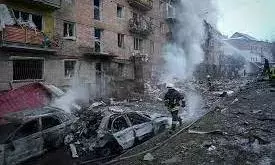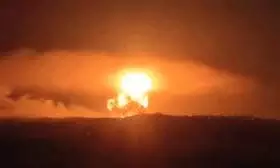
Israel’s heaviest bomb strikes in Syria trigger earthquake-like seismic activity
text_fieldsIn its most intense aerial attack on Syria since 2012, Israel carried out a series of strikes in the coastal regions of northwestern Syria, near Tartus, on Sunday.
According to the Syrian Observatory for Human Rights (SOHR), the bombings targeted air defense systems, missile depots, and other military sites, leaving a massive mushroom cloud fireball visible in the aftermath.
The strikes were so powerful that they registered as a 3.1 magnitude tremor on the Richter scale, reported by Israel's Geographic Survey's seismology department. The earthquake-like event had its epicenter approximately 28 kilometers off the coast of Banias, as confirmed by The Times of Israel.
Richard Cordaro, a US-based researcher, explained that the seismic signal generated by the explosion traveled at double the speed of an ordinary earthquake. His analysis noted that the blast was detected over 820 kilometers away at Türkiye's Iznik magnetometer station, with the signal traveling through the ionosphere in just 12 minutes.
SOHR noted that the Israeli fighter jets targeted strategic military positions, including missile launchers in Hama’s 107th Barracks and weapon storage facilities in the Tartus countryside. Despite the intensity of the strikes, no casualties were reported. The Observatory labeled these strikes as the most violent in Syria’s coastal regions since Israel began its air campaign in 2012.
Israeli Defense Minister Israel Katz recently instructed the military to maintain its presence on Mount Hermon, in the UN-patrolled buffer zone separating Syrian and Israeli forces on the Golan Heights. Katz emphasized the critical security importance of this position, especially amid the ongoing conflicts in Gaza and recent hostilities with Hezbollah in southern Lebanon.























